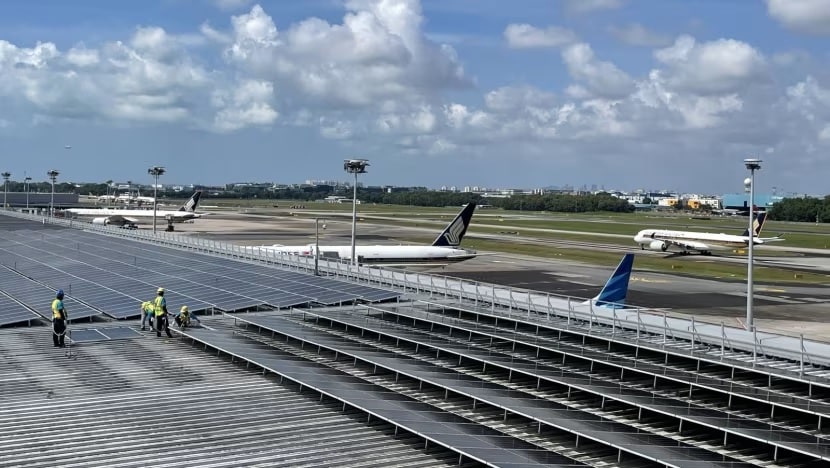
Changi Airport is accelerating its efforts towards decarbonization by embarking on the installation of a substantial solar photovoltaic (PV) system across its premises. This initiative encompasses the deployment of solar panels on the roofs of passenger terminals, as well as on airfield and cargo buildings managed by Changi Airport Group (CAG).
Scheduled for completion in early 2025, this project will mark the establishment of Singapore’s largest rooftop solar PV system within a single location. The announcement, made jointly by airport operator CAG and asset manager Keppel on February 14, underscores a significant leap forward in sustainable energy initiatives.
A key aspect of the endeavor involves the installation of solar panels across a vast area of approximately 4 hectares within the airfield – equivalent to nearly six football fields. This strategic placement adheres to recommendations proposed by an international panel of experts and business representatives in 2022, advocating for solar panels to be integrated into open spaces within airport premises.
CAG has entrusted Keppel with the responsibility of designing, constructing, owning, and operating the solar PV systems at Changi Airport for a duration of 25 years. Upon completion, these systems are anticipated to generate a combined capacity of 43MW-peak (MWp), with 38MWp derived from rooftop installations and an additional 5MWp generated from the airfield-based system.
In terms of environmental impact, the implementation of these solar PV systems is expected to reduce CAG’s carbon emissions by approximately 10% of its 2019 energy consumption levels, equating to an annual reduction of approximately 20,000 tonnes of carbon emissions.
Furthermore, the generated solar energy will be substantial enough to power over 10,000 four-room Housing Board flats on an annual basis, underlining the scale and significance of this sustainable energy initiative.
However, the installation of solar PV systems within airport premises presents unique challenges compared to conventional installations in commercial, industrial, or residential settings. Prior to installation, meticulous simulation studies were conducted to ensure optimal tilting of the solar panels to maximize energy yield while mitigating glare or glint effects that could potentially affect air traffic controllers and pilots operating within the vicinity of the airport.
To adhere to aviation safety and security requirements, installation and maintenance processes must also comply with stringent protocols.
While the exact cost of the solar PV project remains undisclosed due to commercial sensitivities, the completed systems will be seamlessly integrated with Keppel’s operations nerve center at Changi. This integration will enable real-time monitoring of solar generation metrics and advanced fault detection to ensure smooth operations.
Additionally, a smaller-scale 640 kilowatt-peak solar PV system will be installed on the roof of the airport’s maintenance and storage center, further contributing to carbon emission reduction efforts.
Mr. Koh Ming Sue, CAG’s Executive Vice President for Engineering and Development, hailed this initiative as a significant stride in the airport operator’s decarbonization journey. Mr. Lim Yong Wei, General Manager of Keppel’s infrastructure division, expressed Keppel’s commitment to collaborating with CAG in exploring additional decarbonization solutions.
Looking ahead, CAG is exploring avenues for the larger-scale deployment of solar energy systems within the airfield vicinity, aligning with recommendations outlined in the Singapore Sustainable Air Hub Blueprint. With a steadfast commitment to achieving net-zero emissions by 2050, CAG aims to increase the share of renewable energy in its energy mix.
This ambitious solar energy project at Changi Airport underscores Singapore’s dedication to sustainability and serves as a pioneering example of integrating renewable energy solutions within critical infrastructure.















